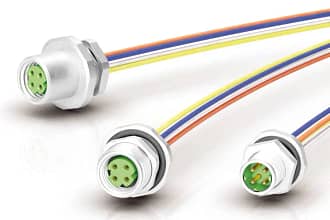The practice of adding carbon plates to shoes has been around since at least the 1990s, when Reebok attempted it. But Nike introduced the world to this technology on a larger scale with the advent of the Nike Vaporfly 4%. These so-called “super shoes” appeared in the 2016 Olympics and were available to everyone starting in 2017, promising a 4% performance improvement.
Now, many companies are creating carbon-plated running shoes that put a spring in your step. They’re gaining popularity largely thanks to their lightweight nature and support. But are they worth the expensive price tag? We talked to three experts to find out.
What are carbon-plated running shoes?
Matt Dustin, a certified precision nutrition coach and NASM corrective exercise specialist, explains, “Carbon-plated running shoes have a stiff, thin carbon fiber plate in their midsole.” He says the plate can help with energy return and make your strides more efficient. Put another way, Engineering.com says that a carbon plate “acts as a lever to effectively roll the foot forward through the force developed by the leg muscle.”
Carbon-plated shoes may also help runners run faster and experience less fatigue, according to Kaleigh Ray, staff writer at Treadmill Review Guru and certified exercise physiologist (ACSM).
Ray holds a master’s degree in biomechanics from the University of Northern Colorado, where her research focus was on carbon-plated shoes and running shoe construction. Explaining the history of the shoe, she notes that carbon plates were first introduced to trail shoes to reduce the feel of rocks underfoot. However, she says, “The current trend of carbon-plated shoes comes from marathon racing shoes.”
The best carbon-plated running shoes
Ray says most running shoe brands have a quality carbon-plated running shoe. Some are geared toward racing, while others are designed for daily training. Ray adds, “I’ve raced in the Altra Vanish Carbon, and I’m running the 2025 Boston Marathon in the New Balance SC Elite. These two shoes are really good for midfoot and forefoot runners.”
Ray also recommends the following shoes for racing:
Benefits of carbon-plated running shoes
Carbon-plated shoes can propel you forward, quickening your leg turnover, according to the Mayo Clinic. Their construction has several key benefits, which Mayo Clinic boils down to a “lower physiological burden” when compared to standard running shoes. More specifically, carbon-plated running shoes offer support, better energy return and speed.
Support
If your shoes only have a lot of bouncy foam, they might make you feel fast but a bit unstable. Ray contends that carbon plates add more stability to running shoes, at least for front-to-back movement.
Meanwhile, Dustin explains that carbon-plated shoes could also improve joint support. He reports, “Carbon plates can lower the impact on your joints by improving your strides.”
Finally, Ray adds, “The shoe does a lot of the work your arch normally does, which helps reduce fatigue.”
Energy return
Having a carbon plate in your shoes helps you conserve energy over long distances. In fact, this is one of the main reasons they’re so popular among elite and distance runners. Ray adds that the shoes “also help direct the spring of the cushioning in the right direction.” This could make each stride more efficient.
Speed
Coach Kelvin, a certified running coach via UK Athletics and online running coach for We Run, says carbon-plated shoes may help you achieve “faster race times for the same amount of effort.” He adds that when wearing carbon-plated shoes, “a runner’s legs get beaten up a little less in training, allowing a runner to add incremental gains over weeks and months.”
A study in the International Journal of Exercise Science found that runners see the most gains from carbon-plated shoes if they run 12 km (about 7.5 mi) per hour.
Carbon-plated running shoes cons
Carbon-plated running shoes may not be for everyone or every type of run. As Coach Kelvin put it, “Super shoes are designed for faster paces and often feel sloppy and unstable at slower paces.” Not only are they more expensive than most regular running shoes, but they take some time to adjust to and may not last as long as other training shoes.
Adjustment period
The feel of carbon-plated shoes takes some getting used to. As Ray puts it, “Running in very responsive carbon-plated shoes can feel like wearing trampoline shoes. Runners may need time to adjust to this feel and sustain the higher energy return of these shoes.” She points out that you may feel out of control when you’re running in these shoes for the first time.
Dustin adds, “The plate is pretty stiff and can be rough on your feet, especially for those who aren’t used to them. They may also change your natural gait mechanics, which could make you uncomfortable or cause injury if used in the wrong way.”
Cost
Most carbon-plated running shoes are priced over $200, with many coming in at over $250. Given that Ray tells us, “Many of these shoes don’t lead to improved performance when running below a certain speed,” they may not be the right investment for a casual runner. If you’re running an 11-minute mile, you probably won’t see the same performance improvements from carbon-plated shoes as fast-paced runners.
Durability
Unfortunately, carbon-plated shoes often wear out more quickly than standard running shoes. The Mayo Clinic says their lack of durability “is why some runners only pull them out specifically in preparation for and during a race.” Dustin agrees with this, saying simply, “Many models don’t last as long as typical running shoes, which means you may have to buy new ones more often.”
Controversy
There remains debate about whether shoes like the Nike Vaporfly shoes give runners an unfair advantage. In fact, they were nearly banned from the 2020 Olympics before the World Athletics decided to allow athletes to compete in them. Currently, the World Athletics rules for competitive running shoes say that soles can be no thicker than 40mm and may only contain one carbon fiber plate.
Who should wear carbon-plated running shoes?
Carbon-plated shoes are most beneficial to competitive runners. As Dustin points out, “They’re best for serious runners looking to improve speed and efficiency. If you race regularly or train at a high level, they can be helpful.” While it probably won’t hurt to wear them as a beginner runner, you’re unlikely to notice a huge difference in your stride or speed during a short workout.
The following groups of people may benefit from carbon-plated running shoes:
- Runners who want a fast-feeling race shoe
- Runners looking for a good recovery-day shoe
- Runners with plantar fasciitis
- Runners with a heel-striking gait
In regards to the final point, Ray elaborates, “Some runners are also low responders to carbon-plated super shoes, which means they don’t see improvements to their running performance from wearing them. Sometimes, this is due to footstrike. Midfoot/forefoot runners may not benefit as much from carbon-plated shoes.”
People with really flat feet may also want to avoid carbon-plated running shoes because they could put extra strain on their arches. Dustin warns, “Runners with a history of Achilles or calf issues should also be cautious, as the mechanics of these shoes can put extra strain on those areas.”
How do carbon-plated running shoes feel to run in?
Despite the stiffness of the carbon plate, these shoes actually feel light and bouncy to run in. While they don’t have springs inside, you might feel like they do. The exact feel of your shoes will depend on a few factors, like how much cushion surrounds the carbon fiber plate. “Generally, a carbon plate that is closer to the foot feels firmer,” explains Ray.
Can you run in carbon-plated running shoes all the time?
Most experts don’t recommend running in carbon-plated shoes all the time. Not only will you reduce their lifespan, but you may hinder some muscle development. Coach Kelvin explains it this way: “It’s not recommended to wear a super shoe for every run because they offload and load the foot in a slightly different way than a daily trainer. Having a rotation of shoes allows a runner’s feet to become strong in all areas.”
Instead, you’d be wise to use these shoes in conjunction with more traditional running shoes. Ray warns that it’s not recommended to only wear carbon-plated shoes “because it’s important to develop the intrinsic muscles of the foot.”
The bottom line
Carbon-plated running shoes may be performance-enhancing for serious race runners, but don’t feel pressured to splurge on a pair if you’re a weekend warrior who likes to get in a few miles after brunch. If you do purchase a pair for a race, make sure they’re compliant; carbon-plated shoes may be considered an unfair advantage by some race organizers.





